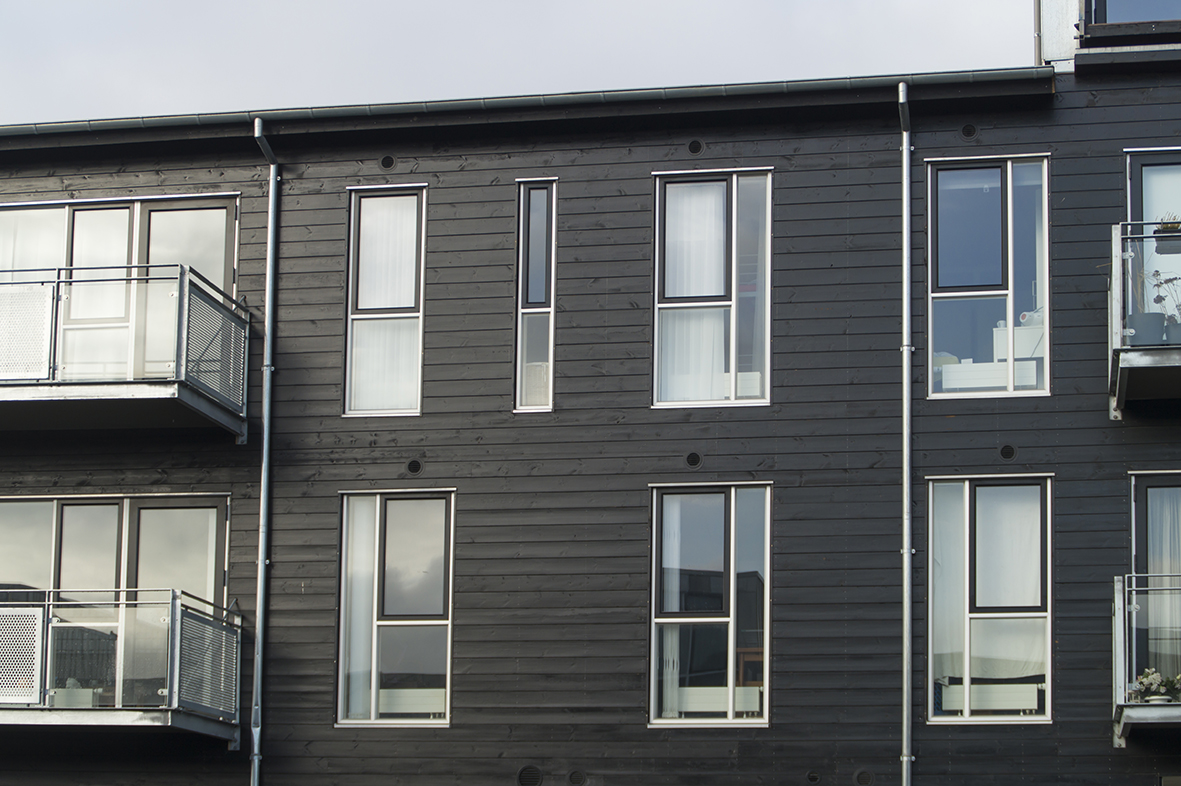Frøslev fire retardant treated wood

FRØSLEV FIREPROOFING OF PROFILES FOR OUTDOOR CONSTRUCTION
The ingredients of the fire retardant proofing process make sure that the flame spread of the wooden surface as well as heat and smoke generation are drastically reduced, giving people in and around buildings the time necessary to reach safety.
Understand the fire classes better

Material:
- A = Incombustible
- B = Fire-retarded
- D = Not fire-retarded, untreated
Smoke:
- s1 = Very limited smoke generation
- s2 = Limited smoke generation
- s3 = No demands on smoke development
Burning droplets:
- d0 = No burning droplets
- d1 = Limited droplets
- d2 = No demand
Construction:
- Covering: E.g. concrete / wind barrier K1 10, B-s1, d0
- Rain shield: Fireshield class B-s1, d0
Frøslev products:
- Western red cedar B-s2, d0
- Thermowood in spruce and pine B-s2, d0
- Larch B-s1, d0
- ABODO B-s2, d0
Fire requirements
Fire requirements to note during construction
Many people mistakenly believe that it is difficult to build with wood when conversation turns to fire. However, contrary to what many people believe, wood is in fact very fire-resistant and often acts better in a fire than for example steel. With the proper dimensions, a wooden structure such as a sports centre will last longer than one made of steel.
This is because steel heats up relatively quickly and starts to bend. However, a wooden structure retains its strength much longer and does not collapse until hardly any wood is left - the wood will burn, but quite slowly, only between 0.6 and 0.8 mm/minute.
Before getting started
Consider:
- Is it 'inside cladding' or 'outside cladding'?
- Are you within the 20 % rule?
- Is the fire requirement: D-s2, d2 / [K1 10] D-s2,d2 or B-s1, d0 / [K1 10] B-s1,d0 - or a fire separating requirement, e.g. class:
- R 30 - load-bearing, but not separating element
- EI 30 - not lead-bearing, but separating element
- REI 30 - load-bearing and separating element
Once those 3 points have been checked, you are ready to describe what materials should or can be used.
The rules in brief
According to current rules, large building in use classes 1-6 can be built and clad with wood for up to 20% of the façade area - known as the 20% rule. There are no other requirements for the wooden part other than the part having to comply with covering class [K1 10] D-s2, d2. For properly profiled wood, this is not a problem, and the wood will comply with class [K1 10] D-s2, d0 without additional treatment. (d0 is better than d2).
The 20% rule does not apply to one-storey buildings. In that case, the entire façade may be made to comply with class [K1 10] D-s2, d2, i.e. properly profiled wood with a ventilated cavity behind.
HOWEVER, for buildings in use classes 1-6 with a floor height up to and above 22, the entire façade may also be clad with wood - as long as the covering class requirement [K1 10] B-s1, d0 has been met. This can be done when the cladding has been tested to meet the [K1 10] B-s1, d0 requirement. However, this is usually not a practical option as cladding typically must be made with a ventilated cavity behind in order to dry and as it is a requirement that the internal fire separation wall is fully extended to the external cladding. In this case, that is not a practical option.
Therefore, the wind barrier must be seen as the external cladding of the façade, and that is the one that must meet the requirements for covering class [K1 10] B-s1, d0. The wooden part of the façade is thus made into the rain shield of the façade, and the requirement for the material is "only" class B-s1, d0 - wood in itself cannot achieve that, but it can once it has been e.g. fire-proofed.
There are also various ways to compensate for, i.a. by using automatic sprinkler systems and façade sprinkling.